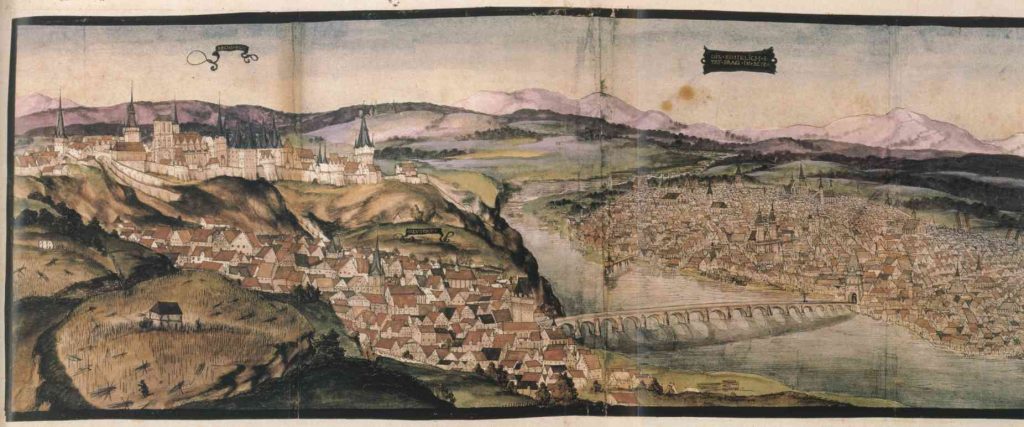
The Lesser Quarter (Malá Strana)
The name Malá Strana translated into English literally means „Little Side“, though it is frequently referred to as „Lesser Town“, „Lesser Quarter“, or „Lesser Side“. This name derives from its position on the left (west) bank of the river Vltava, on the slopes just below the Prague Castle, in opposition to the larger towns of Prague on the right bank, to which it is conjoined by the Charles Bridge.
Malá Strana was founded by the King Ottokar II of Bohemia in 1257. As a royal town (a town founded by the king) it got many privileges. It was created by amalgamating a number of settlements beneath the Prague Castle into a single administrative unit. The original residents were expelled and mostly German craftsmen and merchants were invited by the king. Even though the city was royal, the king did not master the city as a whole.
In the second half of the 14th century the Lesser Town of Prague was extended by the King and Holy Roman Emperor Charles IV who built a new defensive wall called Hunger Wall.
In 1419-1420 the Lesser Town was burnt down by Hussites. In 1541 the town was strongly damaged again by a fire. Because of the fire 50 people died. After this fire the town was rebuilt in the Renaissance style and many palaces of nobility were built there.
The market place, now known as Malostranské náměstí (Lesser Town Square), was the center of the town. This square is divided into the upper and lower parts with the St. Nicholas Church in the middle.








